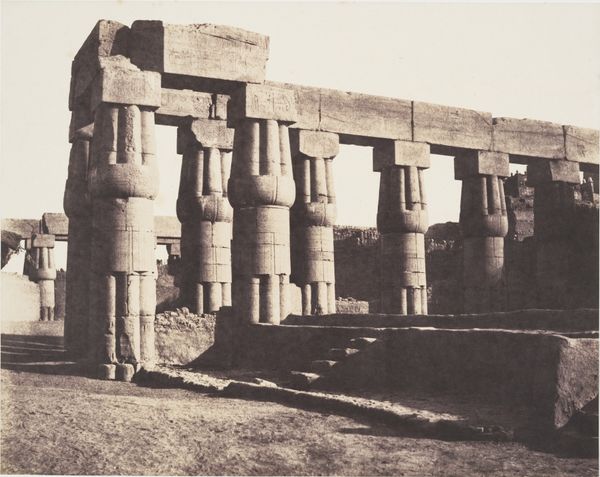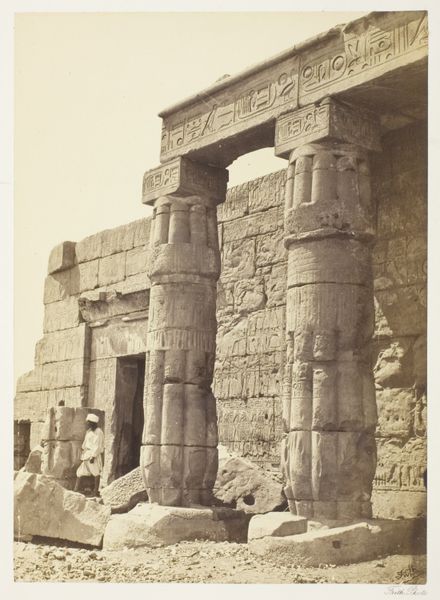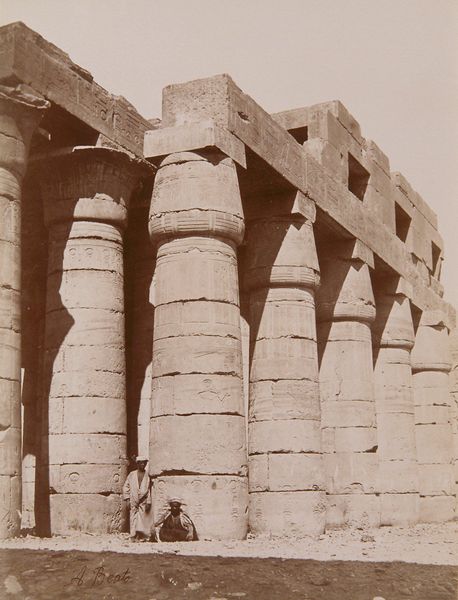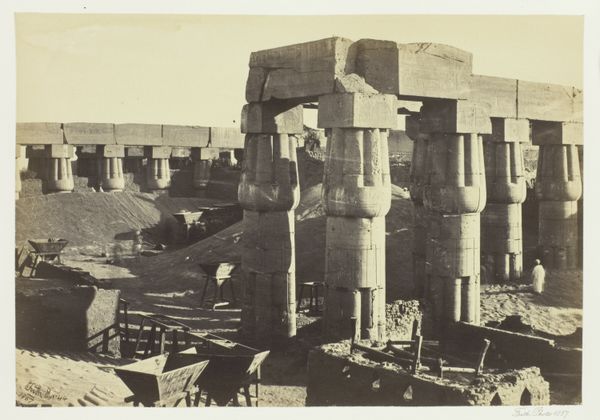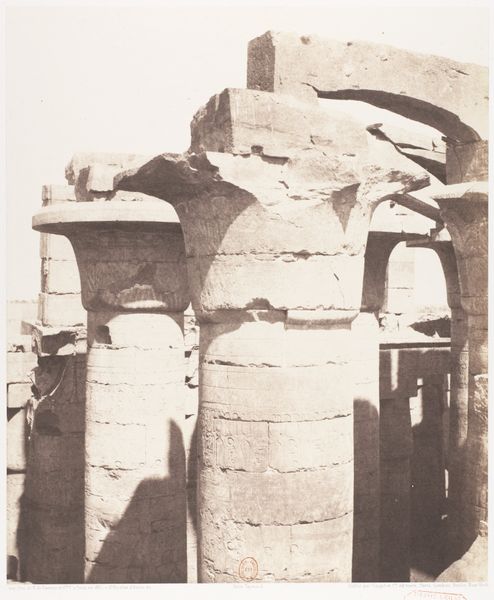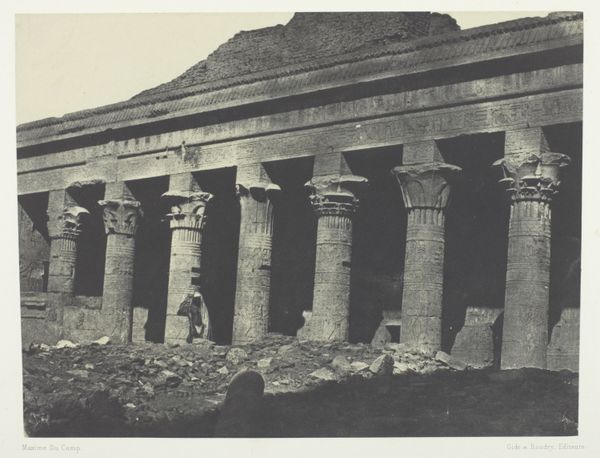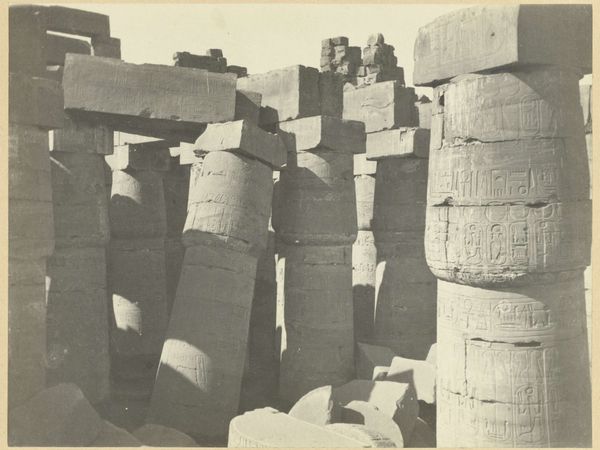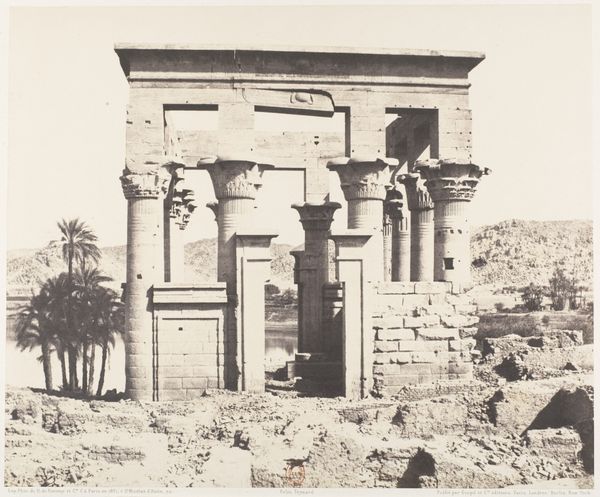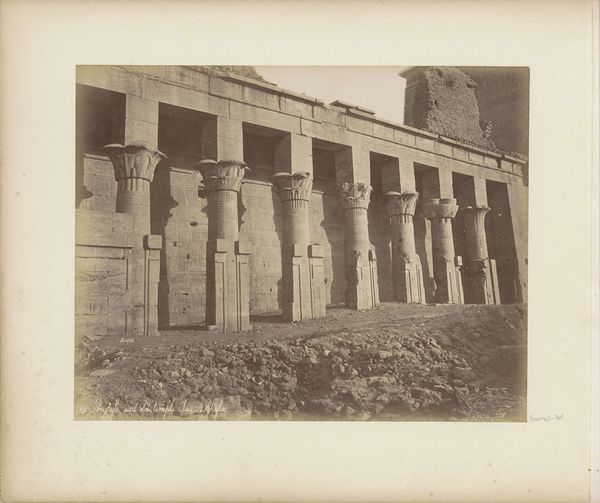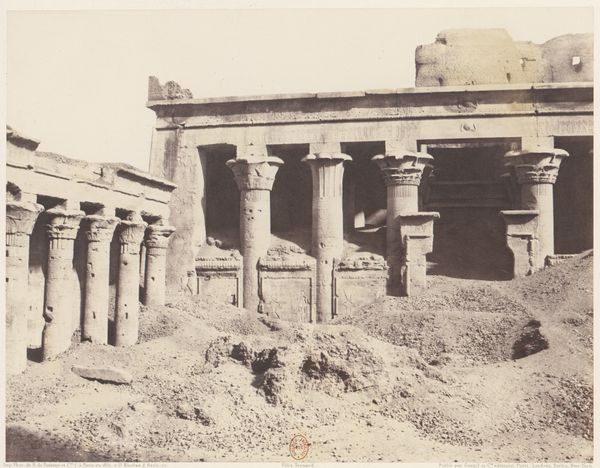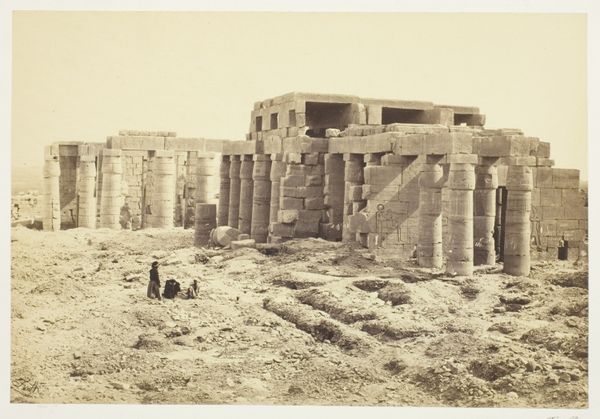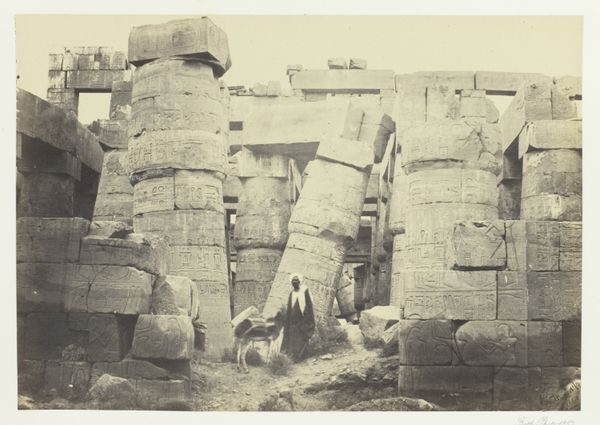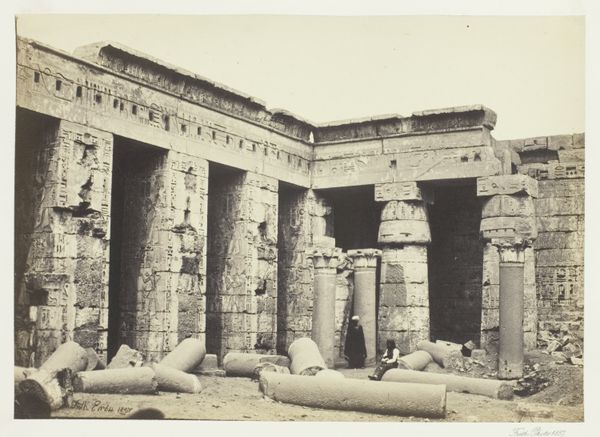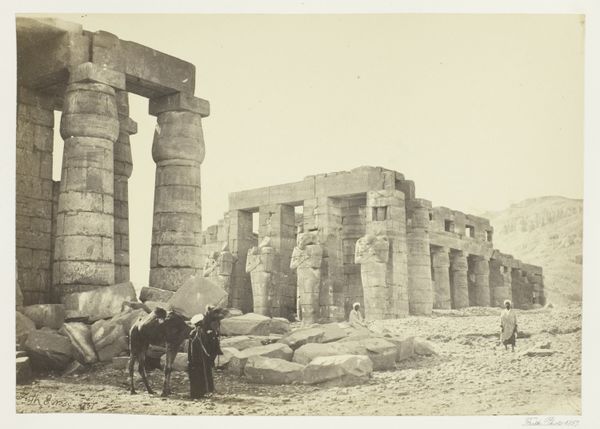
photography, architecture
#
landscape
#
ancient-egyptian-art
#
photography
#
ancient-mediterranean
#
column
#
architecture
Dimensions: 24.5 x 30.1 cm. (9 5/8 x 11 7/8 in.)
Copyright: Public Domain
Félix Teynard's photograph captures the imposing ruins of Gournah, with its colossal statues standing as silent witnesses to time. These figures, likely depictions of pharaohs, embody power and divinity. The erect posture and forward gaze are symbols of authority deeply rooted in ancient Egyptian culture. We see echoes of these motifs in later Greek kouroi, and even in medieval Christian statuary, where the upright stance signifies moral virtue and strength. But consider the cross. What begins as a symbol of suffering becomes, through resurrection, a symbol of triumph. This metamorphosis reveals how a single motif can carry contradictory yet complementary meanings, reflecting humanity's complex relationship with power, mortality, and the divine. Notice the psychological impact of these towering figures. They evoke a sense of awe and perhaps even fear, a primal response to overwhelming power. The cyclical nature of symbols is evident in how these ancient forms continue to resonate, their meanings shifting yet forever tethered to the collective memory of humankind.
Comments
No comments
Be the first to comment and join the conversation on the ultimate creative platform.
